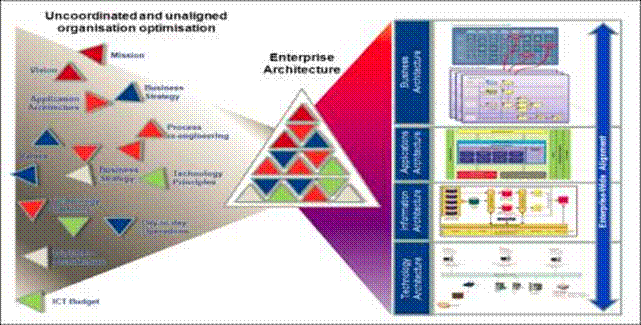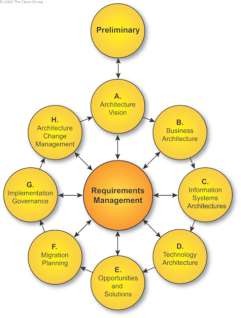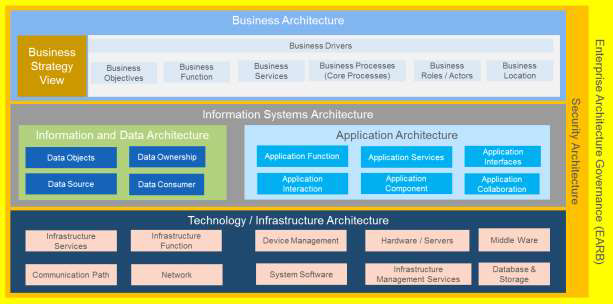Background
The government of Rwanda has embarked on a project to establish and implement enterprise architecture (EA) in public entities with the end goal of establishing common architecture standards across all ICT functional units.
This will in turn assist the government in fostering synergies between entities within and across defined clusters. The government has identified the following as some of the topical issues that enterprise architecture will seek to resolve.
- Poor support for business needs – in some sectors, the ICT function has been found to be misaligned with the needs of the business. This is largely because the ICT capabilities have been developed without direct reference to the business requirements
- Lack of coordination – Projects undertaken within some of the entities are not properly coordinated resulting in wasteful expenditure when some resources could have been re-used or shared
- Inaccurate scoping of projects – without a reference point on the ICT and business landscape, projects are scoped based on assumption of the impact and resources needed to deliver. This has in some cases let to inaccurate project scoping.
- Lack of integration and interoperability – although there are some shared services across some of the public entities, it has been found that their respective ICT functional units have had minimal collaboration. The close association between some of the public entities calls for more integration
- Low quality service delivery – some complaints around quality of service delivery is attributed to lack of coordinated planning due to the absence of reference point of the current business or ICT landscape. This is the gap the enterprise architecture seeks to fill.
It is acknowledged that within each government entity, some of the building blocks that make up enterprise architecture are in existence. The challenge, however, is that their development and arrangement has not been properly coordinated with the use of common standards and therefore fail to provide the added value that the business should be deriving from them.

Addressing the abovementioned challenges requires a structured approach. Within the Enterprise Architecture practice, both methodologies, standards, principles, governance and EA framework drive the structured approach. The selection of each of these requirements is important as care must be taken to ensure that the asset that is selected meets the requirements and capabilities of government of Rwanda.
There are a number of frameworks available that could have been chosen to drive this initiative. However, not all of them meet the requirements of Rwandan Government. The framework that has been chosen is The Open Group Architecture Framework (TOGAF) because its completeness and applicability.
The selection of TOGAF is based on the appreciation that the framework not only covers are all the required architecture domains but also presents an iterative approach to implementation of enterprise architecture.

However, although TOGAF is robust, it is still too complex. The decision was therefore taken to customize the framework to meet the requirements of Rwanda. This decision resulted in the development of the Rwanda Government Enterprise Architecture Framework (RGEA).
Through this modified framework, the core artifacts that are needed to develop enterprise architecture for Government of Rwanda entities are organized per architecture domain to show the horizontal and vertical alignment with other domains.


No Comments